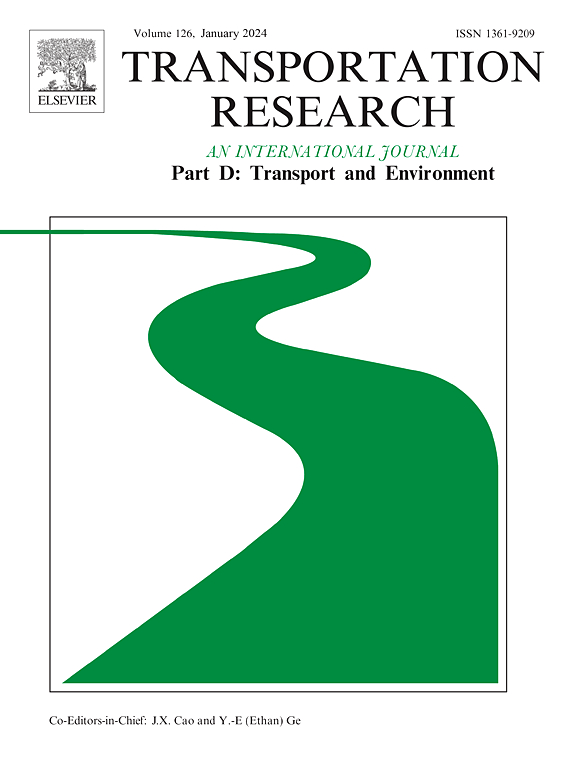原油油轮运输的碳排放分配:全航次生命周期视角
IF 7.7
1区 工程技术
Q1 ENVIRONMENTAL STUDIES
Transportation Research Part D-transport and Environment
Pub Date : 2025-07-25
DOI:10.1016/j.trd.2025.104919
引用次数: 0
摘要
本研究引入了一个完整的航程生命周期框架,通过先进先出(FIFO)货物跟踪将海上二氧化碳排放与国际贸易流量联系起来。通过分析2020年2491艘原油油轮的AIS轨迹,我们将航运总排放量量化为约1.08亿吨二氧化碳,其中压载航行占近40%。与传统的分配方法(船旗国注册、燃料销售或简单的港口到港口航行)不同,我们的方法显著提高了分配公平性:贸易标准化的基尼系数从传统基于航次的方法下的0.232下降到反向分配的0.151。敏感性分析证实了强有力的政策灵活性,表明当改变出口商-进口商分配系数时,国家排放责任排名的变化最小(α = 0.25-0.75)。该框架为将航运排放纳入新兴的碳定价机制、协调海事碳问责制与全球贸易以及支持公平的国际气候治理提供了实际基础。本文章由计算机程序翻译,如有差异,请以英文原文为准。
Allocating carbon emissions from crude oil tanker shipping: Full voyage lifecycle perspective
This study introduces a full voyage lifecycle framework that links maritime CO2 emissions to international trade flows through First-In-First-Out (FIFO) cargo tracking. By analysing AIS trajectories of 2,491 crude oil tankers in 2020, we quantified total shipping emissions at approximately 108 million tonnes of CO2, of which ballast voyages accounted for nearly 40 %. Distinct from conventional allocation methods (flag-state registration, fuel sales, or simplistic port-to-port voyages), our approach significantly enhances allocation equity: the trade-normalized Gini coefficient decreases from 0.232 under traditional voyage-based methods to 0.151 with back-allocation. Sensitivity analyses confirm robust policy flexibility, demonstrating minimal changes in national emission responsibility rankings when varying the exporter–importer allocation factor (α = 0.25–0.75). This framework provides a practical foundation for integrating shipping emissions into emerging carbon pricing mechanisms, harmonizing maritime carbon accountability with global trade, and supporting equitable international climate governance.
求助全文
通过发布文献求助,成功后即可免费获取论文全文。
去求助
来源期刊
CiteScore
14.40
自引率
9.20%
发文量
314
审稿时长
39 days
期刊介绍:
Transportation Research Part D: Transport and Environment focuses on original research exploring the environmental impacts of transportation, policy responses to these impacts, and their implications for transportation system design, planning, and management. The journal comprehensively covers the interaction between transportation and the environment, ranging from local effects on specific geographical areas to global implications such as natural resource depletion and atmospheric pollution.
We welcome research papers across all transportation modes, including maritime, air, and land transportation, assessing their environmental impacts broadly. Papers addressing both mobile aspects and transportation infrastructure are considered. The journal prioritizes empirical findings and policy responses of regulatory, planning, technical, or fiscal nature. Articles are policy-driven, accessible, and applicable to readers from diverse disciplines, emphasizing relevance and practicality. We encourage interdisciplinary submissions and welcome contributions from economically developing and advanced countries alike, reflecting our international orientation.

 求助内容:
求助内容: 应助结果提醒方式:
应助结果提醒方式:


